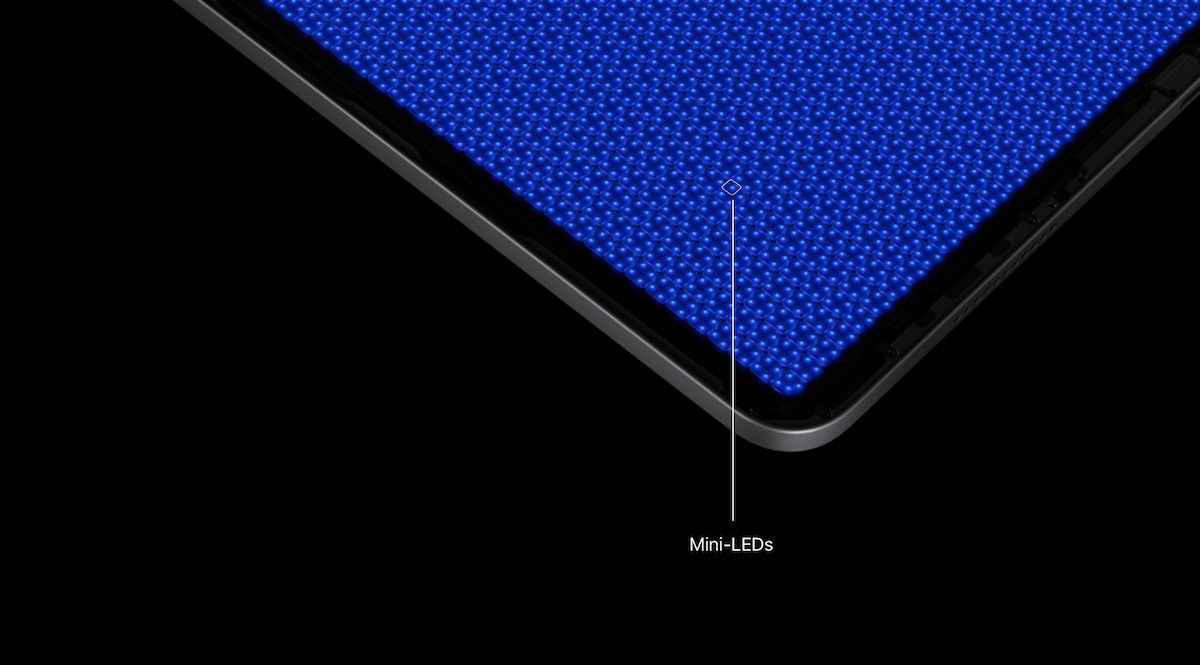iPad Pro Liquid Retina XDR Display supports 1000 nits of fullscreen brightness and 1600 nits peak brightness for HDR content. The mini-LED display features 10,000 LEDs that form 2500 local dimming zones to enable a 1,000,000:1 contrast ratio.

iPad Pro XDR Display has more local dimming zones than Apple’s Pro Display XDR
As per Apple’s website:
Extreme dynamic range comes to the 12.9-inch iPad Pro.2 The Liquid Retina XDR display delivers true-to-life detail with a 1,000,000:1 contrast ratio, great for viewing and editing HDR photos and videos or enjoying your favorite movies and TV shows. It also features a breathtaking 1000 nits of full‑screen brightness and 1600 nits of peak brightness. And advanced display technologies like P3 wide color, True Tone, and ProMotion.
To put things into perspective, Pro Display XDR, Apple’s $5,000 display, features 576 full array local dimming zones. While other smartphones from the likes of Samsung boast about high peak brightness numbers, those numbers can only be hit in specific situations where a certain percentage of the OLED display is white or black. With the new 12.9-inch iPad Pro, Apple claims 1000 nits of full-screen brightness, no matter what you are watching, while portions of the display can hit 1600 nits of peak brightness for extreme dynamic range.
Coupled with the likes of P3 wide color, True Tone, and 120Hz ProMotion technologies, the display in the new 12.9-inch iPad Pro might be the best display Apple has ever made.
While mini-LED displays like the one in iPad Pro are almost as good as OLED displays, they are not perfect. mini-LED displays do not feature pure blacks, but they also avoid some of the downfalls of OLEDs like smearing. Apple is expected to roll out mini-LED displays to its upcoming 14-inch and 16-inch MacBook Pro models this year, which should finally bump up their displays from 500 nits of brightness to actual HDR-compatible screens.
Read more:
2 comments
Comments are closed.